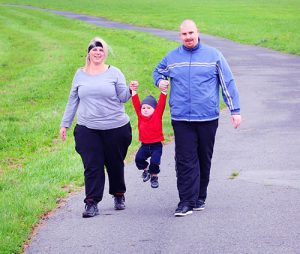One infrastructure boosts European food and health research
Food and health are inextricably related to each other. We all know that we need a healthy and varied diet. We also know that too much fat, sugar or salt is bad for our health. It is up to science to devise solutions for problems related to food and health: which factors, such as habits, lifestyle, preferences and taste, play a role in consumer food choice behaviour? How, for example, can ‘personalised nutrition‘ help the consumer avoid developing specific health complaints? How can we ensure that a healthy choice becomes the consumer’s habitual choice? And how should we anticipate climate change and economic fluctuations to provide assurances for food security? A research infrastructure for food, nutrition and health will help answer this question.
As food and health issues are major issues, research in the Food & Health area is placed high on the national research agenda of most European Member States. However, the problem is that the various European agendas are not appropriately harmonised. Moreover, the research indicators are not identical and different tools and methods are used to collect, analyse and process data. An analogy to this would be a European rail network in which the differences in the track gauge, rolling stock and railway timetable in each country compel international passengers to change trains at the national borders – possibly to discover that the last train has just left.
Closing the knowledge gap
For this reason, a large number of research institutes are working – under the direction of Wageningen University & Research – on a joint European infrastructure for scientific research into food, health and consumer behaviour. One European research infrastructure will ensure that we will soon all adopt one set of indicators that are used with the same type of data that is inputted in the same manner. This will then enable the stakeholders to compare, link and share research data. One infrastructure will also improve our ability to identify themes for which more knowledge is required and then determine how the knowledge gap can be closed. This is in everyone’s interest – from consumers and companies in the food industry to policy-makers and nutritional experts.
Consumer as the linking pin
In my opinion, the emergence of a European research infrastructure marks a crucial step towards scientific breakthroughs that will lay the foundations for successful behavioural interventions and innovative food products. This infrastructure will need consumer data on purchasing behaviour, lifestyle, the preparation and consumption of food and the effect of food on the human body. We intend to collect this data by offering consumers, in their role as linking pin, a platform for the voluntary sharing of individual data on behaviour, food intake and health. Consumers who supply this data will receive individual feedback that will be dependent on the situation, the time of consumption and the location. This will take place within the scope of the EU RICHFIELDS project.
 Scientific research into diseases such as obesity carried out in the USA was standardised many decades ago. However, in the absence of this standardisation in Europe a tremendous gap yawns in the knowledge domain. One European research infrastructure will provide cross-border consumer insights and will enable us to give much more careful consideration to the place food and health is assigned on the European and national research agendas. So let’s close the yawning gap!
Scientific research into diseases such as obesity carried out in the USA was standardised many decades ago. However, in the absence of this standardisation in Europe a tremendous gap yawns in the knowledge domain. One European research infrastructure will provide cross-border consumer insights and will enable us to give much more careful consideration to the place food and health is assigned on the European and national research agendas. So let’s close the yawning gap!
Want to know more about this topic? Visit Research infrastructure for health and nutrition on wur.nl.

